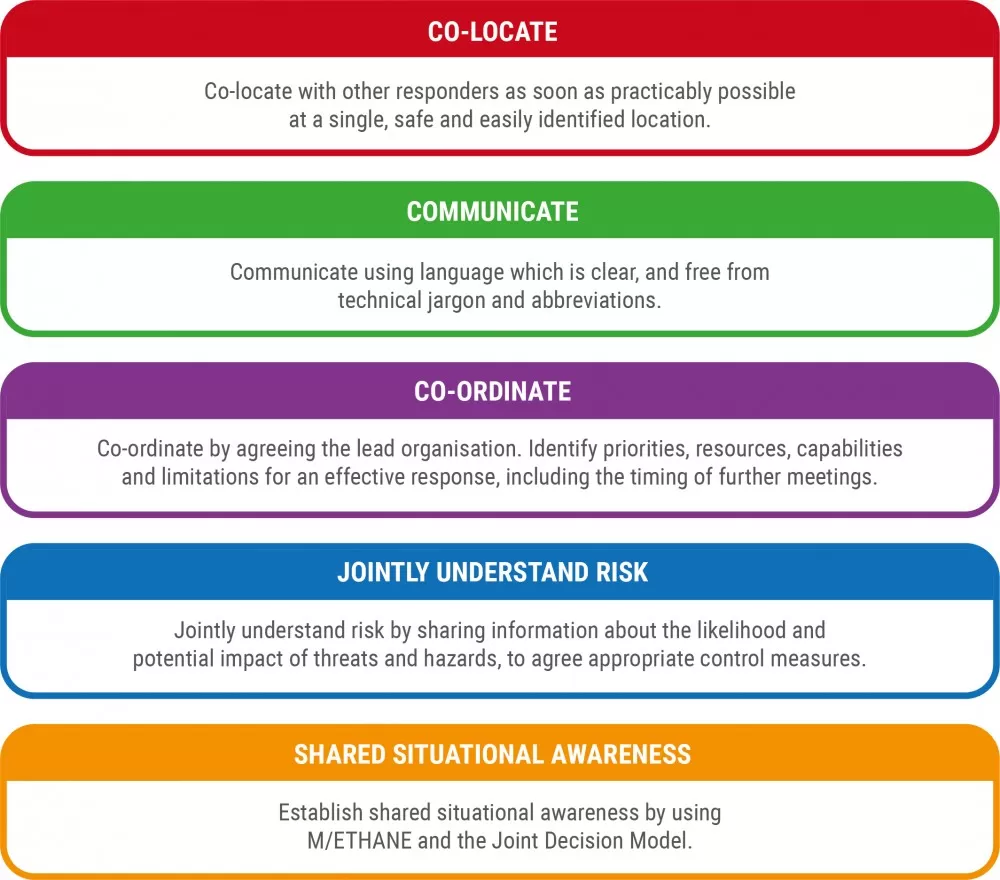Principles for joint working
The principles for joint working should be used during all phases of an incident, whether spontaneous or pre-planned and regardless of scale.
They support the development of a multi-agency response and provide structure during the response to all incidents. The principles can also be applied during the recovery phase.
The principles illustrated in the diagram below are presented in an indicative sequence, although they can be applied in a different order if necessary.
The application of simple principles for joint working are particularly important in the early stages of an incident, when clear, robust decisions and actions need to be taken with minimum delay, often in a rapidly changing environment.
Co-locate
There are many benefits of co-location, such as improved communication and understanding that support joint working. With the use of technology, co-location can be virtual; this may be particularly beneficial for incidents that involve a regional or national response or are protracted.
Communicate
Meaningful and effective communication between responders and responder organisations underpins effective joint working. Communication links start from the time of the first call or contact, instigating communication between control rooms as soon as possible to start the process of sharing information.
Co-ordinate
Co-ordination involves control rooms and responders of all levels, be they on scene or at a Tactical or Strategic Co-ordinating Group, discussing the available resources and activities of each responder organisation, agreeing priorities and making joint decisions throughout the incident. Co-ordination underpins joint working by avoiding potential conflicts, preventing duplication of effort and minimising risk.
Jointly understand risk
Each organisation should carry out their own risk assessments, then share the results so that they can plan control measures and contingencies together more effectively.

